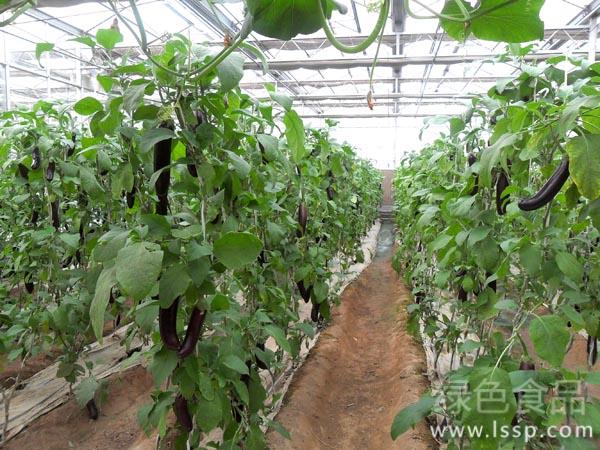Field management techniques of asparagus in winter to lay a good foundation for high yield

asparagus
With the coming of winter, the aboveground plants of asparagus are gradually senescent and yellow and in a dormant state, but the underground roots continue to move and accumulate nutrients. It is necessary to seize this period to carry out a series of field management measures, such as garden cleaning, watering, soil loosening and disinfection, to ensure the safe overwintering of asparagus and lay a good foundation for high quality and high yield in the following year.
1. Re-application of overwintering fertilizer: after the end of autumn harvest of asparagus, overwintering fertilizer should be applied again and again in order to meet the needs of underground root growth. After picking bamboo shoots in autumn, cut off the withered and yellow mother stem and move it out of the field and burn it. Two overwintering fertilizers were applied to "the Beginning of Winter" and "the Winter Solstice" respectively, mainly organic fertilizer, 1000-2000 kg of soil fertilizer, 100,200kg of calcium magnesium phosphate and 20-30kg of ammonium bicarbonate per mu, mixed with peanut cake, bone meal and so on. After full fermentation, ditch or hole application was applied to the border, and the damage of stored roots was minimized when digging holes. "the Beginning of Spring" applied fertilizer again, 20-31 kg compound fertilizer mixed with 2-3 kg borax or potassium dihydrogen phosphate, or urea mixed with potassium chloride or soil fertilizer 50-60 piculs per mu to promote the growth of tender stems. One watering must be carried out after each fertilization, and once every 6-7 days in the dry season.
Second, clear the garden for disinfection. In winter, the aboveground stems and leaves of asparagus gradually withered, and according to the withered degree of plants on the ground from "Greater Cold" to "the Beginning of Spring", the plants were cut off successively, litter and weeds were thoroughly cleared, and burned out from the field to eliminate overwintering parasites and pathogens. The cultivation soil at the base of the plant can be removed properly when the overwintering fertilizer is applied for the first time, until after the second fertilization, usually after "the Beginning of Spring" (during this period, all the aboveground parts of the plant have been withered and cut off), take advantage of the sunny weather to remove all the cultivated soil, and remove the residual stems, pay attention to not damaging the basal scale buds, after 1-2 days of sun exposure, the whole garden is sprinkled with 3 kilograms of ground insect per mu. Or use 40% asparagus green 600 times solution to spray soil and roots to eliminate overwintering pathogens, reduce the number of pathogens, so as to control the occurrence of diseases, and then cover 5-6 cm of guest sand. 50-75 kg quicklime can be applied per mu to neutralize the acidity of the soil in the slightly acidic bamboo shoot garden.
Third, clear ditch and prevent waterlogging: the root system of asparagus is fleshy root. if the soil water content is too much, it is easy to suffer frost injury or cause root rot in winter, which not only affects the yield of asparagus, but also reduces the quality of asparagus. Therefore, it is necessary to clear the ditch in time and lower the groundwater level to prevent the occurrence of waterlogging and root rot.
Fourth, prevention and control of diseases and insect pests: the main diseases and insect pests of asparagus during overwintering are stem blight, aphids, ground tigers and so on. The control of stem blight can be carried out by combining agronomic and pesticide methods, clearing ditches, lowering the groundwater table, applying less nitrogen fertilizer, increasing phosphate fertilizer and soil miscellaneous fertilizer, and spraying with 70% methyl topiramate or 50% carbendazim 600-800 times. Aphids can be sprayed with 1000 times of 50% phoxim EC or 1000 times of imidacloprid wettable powder. The ground tiger can be controlled by poison bait, grass trapping or artificial capture.
- Prev

Pay attention to eight measures to ensure the production of vegetables in greenhouse in deep winter
Pay attention to eight measures to ensure the production of vegetables in greenhouse in deep winter
- Next

How to control the "three falls" of hot pepper by reducing the yield by a large margin
How to control the "three falls" of hot pepper by reducing the yield by a large margin
Related
- Fuxing push coffee new agricultural production and marketing class: lack of small-scale processing plants
- Jujube rice field leisure farm deep ploughing Yilan for five years to create a space for organic food and play
- Nongyu Farm-A trial of organic papaya for brave women with advanced technology
- Four points for attention in the prevention and control of diseases and insect pests of edible fungi
- How to add nutrient solution to Edible Fungi
- Is there any good way to control edible fungus mites?
- Open Inoculation Technology of Edible Fungi
- Is there any clever way to use fertilizer for edible fungus in winter?
- What agents are used to kill the pathogens of edible fungi in the mushroom shed?
- Rapid drying of Edible Fungi

